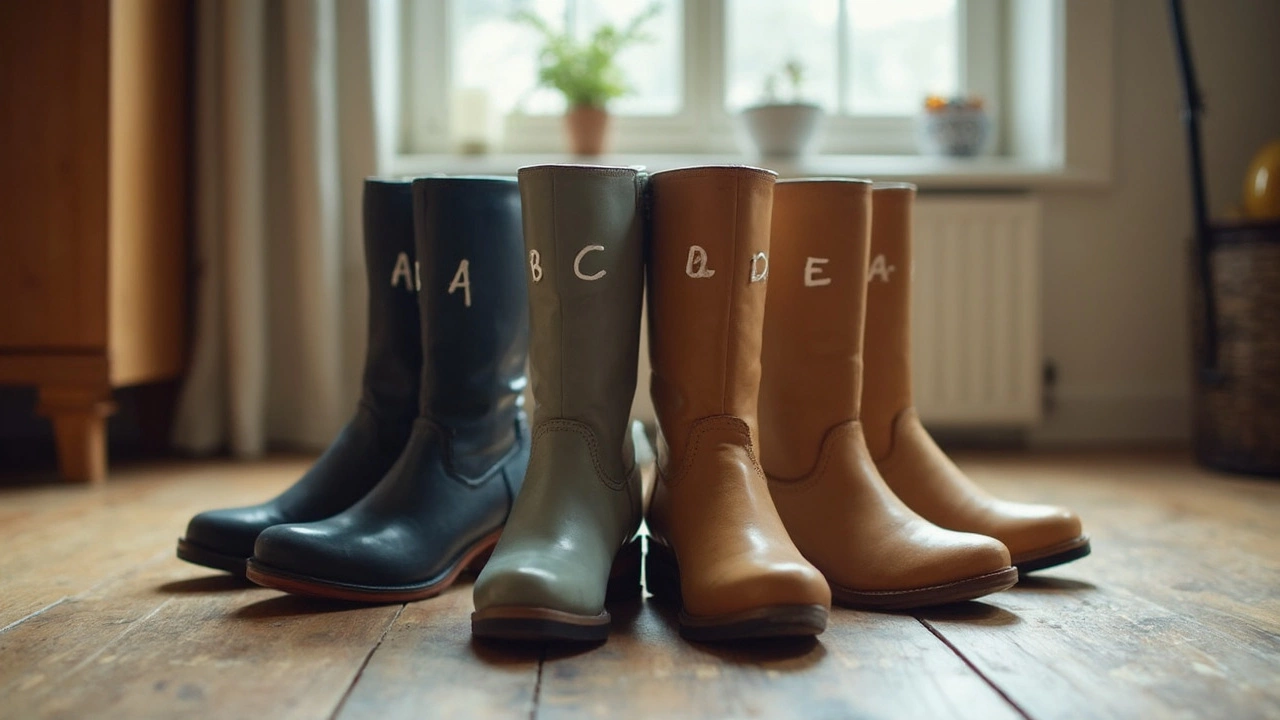Women’s Boots Sizing – How to Get the Right Fit
If you’ve ever bought boots that feel too tight or slide off your heel, you’re not alone. Boots need a little more care than sneakers because they hug your ankle and often have a higher shaft. Getting the size right saves you time, money, and foot pain.
Measure Your Foot Correctly
Start by tracing your foot on a piece of paper. Do this at the end of the day when your feet are a bit swollen – that’s the size you’ll actually wear. Measure the longest distance from heel to toe and the widest part across the ball of the foot. Write both numbers down in centimeters or inches.
Next, stand on a ruler or a measuring tape and note the length from the floor to the tip of your longest toe. Most brands base their size charts on foot length, so this number is the key. If you’re between sizes, round up – it’s easier to tighten a boot than to stretch it.
Decode Size Charts & Brand Labels
Every brand uses slightly different markings. In the UK you’ll see numbers like 5, 6, 7, while US labels add a “½” for half‑sizes. Some European brands use EU numbers (38, 39, 40) and a few use the AD/EE system you might have seen on other clothing. Look up the brand’s specific chart and match your foot length to the listed size.
Don’t forget width. If the chart shows a “W” or a “D”, that usually means a wider fit. Women’s boots often run narrow, so if you have a broader foot, add a half‑size or choose a style labeled wide.
Toe room matters too. A good rule of thumb is to have about a thumbnail’s worth of space (about ½ inch) between the end of your longest toe and the front of the boot. This prevents bruised toenails and makes walking more comfortable.
Heel slip is another red flag. When you walk, the heel should stay snug but not pinching. If your heel lifts, try a size up or look for boots with adjustable straps.
When you try boots on, wear the socks you plan to use most – thick wool for winter or thin cotton for summer. Walk around the store, climb a step, and sit down. If the boot feels good in all those positions, you’ve likely found the right size.
If you’re shopping online, check the return policy before you buy. Many sites let you return unworn boots within 30 days, which gives you a safety net if the fit isn’t perfect.
Finally, give your new boots a break‑in period. Wear them at home for an hour or two each day before tackling a full day out. This helps the leather or suede mold to your foot without causing blisters.
By measuring, checking brand charts, and testing for toe room and heel slip, you’ll stop guessing and start wearing boots that feel as good as they look. Happy shopping!

Are Thursday Boots True to Brannock Size? Women's Fit Guide
Thursday Boots have a reputation for being both stylish and practical, but figuring out the right size, especially by Brannock standards, throws a lot of people off. This article breaks down how Thursday women's boots fit compared to the classic Brannock device measurement. It covers what makes the Brannock device the gold standard, where Thursday sizing holds up, and some handy hacks if you're between sizes. If you're eyeing a pair but stressed about online shoe shopping, you'll get solid, no-nonsense advice here.

What is D in Boots? Unraveling Women's Boot Sizing
Ever wonder what the 'D' stands for in women's boots? It actually relates to the width of the boot. Understanding this can make a world of difference when shopping for comfortable footwear. We'll explore the ins and outs of boot sizing, offering tips to find your perfect fit and avoid common pitfalls. No more guessing or painful shopping trips—get ready to step out in boots that feel tailor-made just for you.




